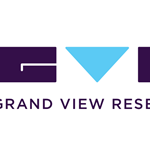The global propionic acid market was valued at approximately USD 1.11 billion in 2023 and is forecast to reach USD 1.40 billion by 2030, registering a compound annual growth rate (CAGR) of 3.4 % between 2024 and 2030. Its growth is driven by widespread applications across sectors such as food preservation, cosmetics, and pharmaceuticals, as well as use as antifungal and antibacterial agents in agriculture and livestock.
Key Market Trends & Insights
- In 2023, Europe led the market with the largest regional revenue share of 39.1 %.
- The Asia Pacific region is expected to grow most rapidly, with a projected CAGR of 4.0 % during the forecast horizon.
- By application, animal feed held the dominant share in 2023, accounting for 54.1 % of total revenues.
Propionic acid’s utility in preserving the flavor of cheese, bread, tortillas, and other baked goods further supports demand growth. Beyond food preservation, the acid serves as an intermediate in the manufacture of herbicides, rubber chemicals, emulsions, and environmentally friendly solvents. It is also involved in producing artificial fruit flavors and modified cellulose fibers.
In agriculture, it is used to inhibit bacteria and fungi in stored grains, hay, poultry litter, and livestock water, which helps drive adoption in that sector. In pharmaceuticals, demand is sustained by its use as a solvent and in nonsteroidal anti-inflammatory drug (NSAID) production. The increasing requirement for vitamin E in poultry feed and its incorporation into cosmetic formulations such as skin creams and hair sprays add further demand drivers.
Market Size & Forecast
- 2023: USD 1.11 billion
- 2030 (projected): USD 1.40 billion
- CAGR (2024–2030): 3.4 %
- Europe remains the largest region by revenue in 2023, largely owing to strong demand from food, cosmetics, and healthcare industries.
- In Germany, which accounted for 14.5 % of Europe’s share in 2023, stringent quality standards and a strong pharmaceutical sector support significant usage.
- The U.K. market is also expected to expand as demand from feed and food preservation applications gains traction.
Order a free sample PDF of the Propionic Acid Market Intelligence Study, published by Grand View Research.
In North America, widespread use in packaged and convenience foods supports propionic acid adoption. The U.S. market is expected to expand steadily, backed by government support and growth in agriculture and poultry sectors.
Asia Pacific is projected to see robust growth. China is a major consumer and importer, with demand stemming from pharmaceuticals, agriculture, livestock, and food and beverage industries. In India, growth is underpinned by industrial expansion, sufficient labor, and growing domestic consumption of preserved foods and agricultural applications. Government incentives and investments in local production are also expected to boost market growth.
Key Companies & Market Share Insight
Major players in the propionic acid sector include BASF SE, Dow, Eastman Chemical Company, Perstorp, Otto Chemie Pvt. Ltd., Merck KGaA, and Celanese Corporation. These firms are actively investing in innovation and capacity expansion to secure competitive advantages.
- Dow Chemical Company is a major global supplier of specialty chemicals, plastics, agricultural products, and synthetic fibers, with offerings spanning propionic acid and related derivatives.
- Eastman Chemical Company manufactures and supplies specialty chemicals, additives, advanced materials, and derivatives such as organic acids and propylene compounds, serving markets in food, animal feed, agriculture, and consumer goods.
These key companies maintain substantial influence over market direction, pricing, and capacity trends.
Key Companies List
Some of the leading companies operating in the propionic acid market are:
- BASF SE
- Dow
- Eastman Chemical Company
- Perstorp
- Otto Chemie Pvt. Ltd.
- Merck KGaA
- Celanese Corporation
- OQ Chemicals GmbH
- Daicel Corporation
- SONTARA ORGANO
- KANTO KAGAKU
- Junsei Chemical Co., Ltd.
Recent strategic developments include, in February 2024, Daicel Corporation entering a joint venture with Inabata & Co., Ltd. to form Novacel Co., Ltd., where Daicel will transfer a 66.7 % stake of its resin compounding business. In September 2023, Eastman sold its Texas City operations to INEOS Acetyls and signed an MOU exploring long-term vinyl acetate monomer supply arrangements.
Conclusion
In summary, the propionic acid market is set for moderate yet steady growth through 2030, driven by its versatile role in food preservation, agriculture, pharmaceuticals, and specialty chemicals. Europe currently commands the largest share, while Asia Pacific—especially China and India—is poised to exhibit the fastest growth. Animal feed remains the leading application segment, and established chemical players are making strategic moves to reinforce their market positions. As demand for safe food additives and sustainable agricultural practices intensifies, propionic acid’s importance across end-use industries is expected to strengthen further.
Explore Horizon Databook – The world's most expansive market intelligence platform developed by Grand View Research.






